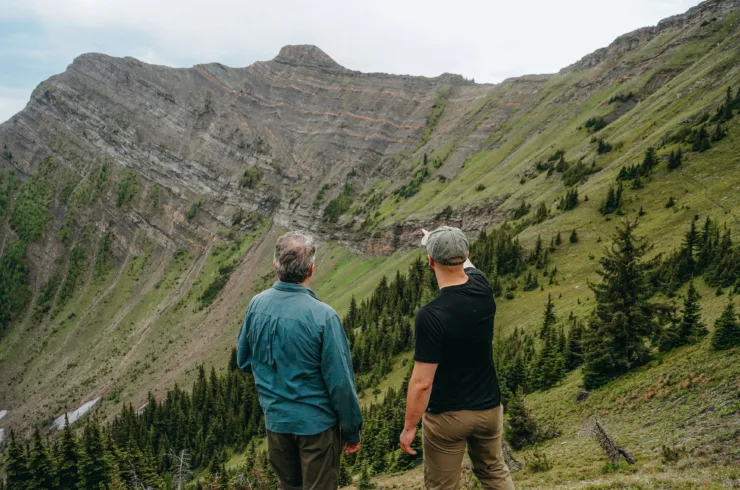Imagine a magical and majestic mountain setting with towering peaks, lush forests and pristine lakes teeming with fish. A place where ancient trees preside over wildlife corridors, critical for the endangered mountain caribou, mountain goat and grizzly bears. A rare and special ecosystem home to 305 species at risk.
We’d like to introduce you to the Wood River Wilderness—a proposed wilderness area commemorating the Athabasca Pass route through the Rockies, long used by First Nations for trade and travel. In 1811, David Thompson, traveling with indigenous guides, crossed the Rockies into the Columbia Valley. His explorations eventually followed the entire 2000km Columbia River to the Pacific Ocean.
The Wood River Wilderness, at roughly 50 square kilometres, would incorporate the upper Wood, Pacific and Jeffrey watersheds, including the Athabasca Heritage Trail from Athabasca Pass down to a few kilometres upstream of the Wood Arm of Kinbasket Reservoir. The area is remote, even by Canadian Rocky Mountain standards, and represents an ecosystem more akin to BC’s coastal forest than to the high and dry country associated with the Rocky Mountains. Cedars, hemlock and spruce dominate this Rocky Mountain rainforest, rich in lichens, moss and ferns, while the alpine tundra and glaciers above are surrounded by some of the highest peaks in the Canadian Rockies. Mountain caribou, wolverines, grizzly bears, moose and mountain goats roam this remote wilderness, only very rarely encountering humans.

The Wood River Wilderness would not only preserve the historic Athabasca Trail, it would protect a wilderness and an experience still unchanged two centuries after David Thompson first crossed the Rockies.
There are few places remaining where those of us immersed in modern life can actually experience time travel or the closest parallel. Ancient trees still bear blaze marks from 200 years ago. Here, as in no other place, travellers follow in the footsteps of the explorers and First Nations people, seeing the same things they saw, experiencing a wild landscape rich with Canadian history.








